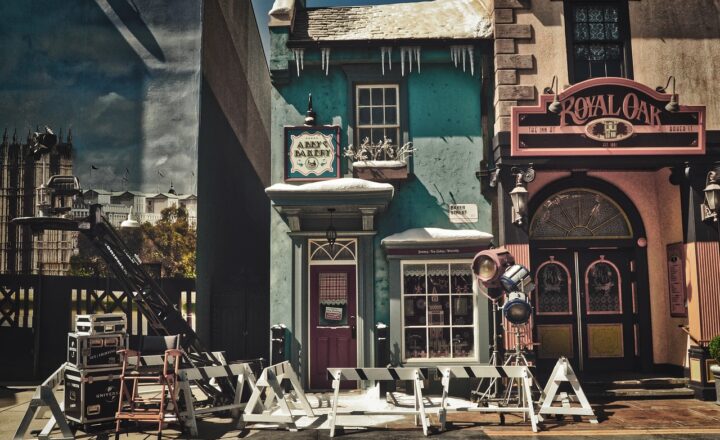How Sound Design Enhances the Viewing Experience in Cinema
November 15, 2024

Sound design is a critical yet often overlooked aspect of filmmaking that significantly enhances the overall viewing experience. While audiences tend to focus on visual elements such as cinematography, acting, and special effects, the audio landscape is equally important in creating an immersive cinematic experience. This article explores the various components of sound design, its impact on audience perception, and the creative techniques that filmmakers use to elevate storytelling through sound.
1. The Importance of Sound Design in Cinema
Sound design encompasses every auditory element in a film—from dialogue and music to sound effects and ambient sounds. Good sound design can dramatically affect how a viewer interprets a scene and their emotional response to it. It is not just about filling silence; sound works to underline the emotions, themes, and narrative structures of a film.
Some of the key purposes of sound design include:
- Enhancing Emotion: Sound can amplify the emotional impact of a scene. Music swells to heighten tension or evoke sadness, while sound effects create atmosphere. For instance, the sudden crash of thunder can evoke fear or anxiety, immediately immersing the audience in the film’s emotional arc.
- Establishing Atmosphere: The use of ambient sound can transport viewers into the film’s setting. Whether it’s the bustling sounds of a city or the serene sounds of nature, these auditory cues help establish a character’s surroundings and mood.
- Creating Realism: The careful incorporation of realistic sound effects elevates the authenticity of a film. Each sound, from footsteps on gravel to the hum of machinery, adds a layer of immersion that draws viewers in.
2. Components of Sound Design
To fully appreciate sound design, it’s important to understand its individual components:
- Dialogue: The spoken words of characters are pivotal to storytelling, and sound designers work closely with dialogue editors to ensure clarity and emotional resonance.
- Sound Effects: These are artificially created or enhanced sounds added to a film in post-production. They can range from subtle background noises to exaggerated sounds meant to heighten drama. For example, the sound of a sword slicing through the air is not only realistic but enhances the action’s intensity.
- Foley: Foley artists create everyday sound effects synchronized to the film during post-production. This can include footsteps, closing doors, or the rustle of clothing, helping to create a more immersive viewing experience.
- Music Score: The film score is vital for emotion and setting the mood, composed specifically to enhance scenes and character arcs. Themes can help in building anticipation or evoke specific feelings during pivotal scenes.
- Ambience: Background sounds that create the environmental setting. This includes the natural sounds of a forest or the cacophony of a city street which can affect the overall tone of a film scene.
3. Techniques in Sound Design
There are several techniques that sound designers use to optimize the auditory experience for audiences:
- Layering Sounds: Combining multiple sound elements to create a fuller, richer auditory experience. For example, the sound of wind, chirping birds, and rustling leaves can combine to create a believable atmosphere in a nature scene.
- Spatial Audio: Utilizing sound placement to give the audience a directional experience. This technique helps in achieving a 3D audio environment where the audience can perceive sound from all directions, intensifying the immersive experience.
- Dynamic Range: Crafting a wide spectrum of sound, from the softest whispers to thunderous explosions. This contrast keeps the audience engaged and enhances emotional moments within the film.
- Silence and Pauses: Strategic use of silence can create suspense and heighten dramatic tension, making the following sound more impactful.
4. Sound Design in Different Genres
Different film genres often employ sound design in unique ways. Here’s a look at sound design in various genres:
- Horror: Horror films utilize sound to create jump scares and a sense of dread. Eerie whispers, creaking doors, and sudden loud sounds build tension that keeps audiences at the edge of their seats.
- Action: The sound of explosions, gunfire, and fast-paced music bolster the adrenaline rush in action films. Quick cuts between high-impact sounds amplify the excitement on screen.
- Drama: In drama films, subtle sound design enhances the emotional weight of scenes. The quiet murmurs of crowds, heartfelt music, or the surrounding silence can lead to profound viewing experiences.
- Animation: Animated films often rely heavily on sound design to fully bring characters to life. Sound effects can accentuate movements, while vibrant music scores can evoke whimsy and charm, enhancing the animated storytelling process.
5. Iconic Examples of Sound Design
Several films illustrate the power of sound design:
- “A Quiet Place”: This film exemplifies the profound use of silence and sound. The sound design plays a pivotal role as characters navigate a world where noise can mean death. The sounds that it uses—from delicate whispers to the haunting sound of the creatures—create a tense atmosphere that captivates viewers.
- “Dunkirk”: Directed by Christopher Nolan, this film features a relentless ticking sound that builds tension throughout the story. The blend of sound effect and score immerses viewers in the harrowing experience of war.
- “Star Wars”: Known for its groundbreaking sound design, the franchise’s iconic sound effects, such as the hum of lightsabers and the roar of TIE fighters, create a fantastic auditory experience that has become synonymous with the series.
Conclusion
Sound design is an essential element that underpins the film-watching experience. From enhancing the emotional tones of a narrative to solidifying the viewer’s engagement in different genres, effective sound design is paramount in storytelling. As technology advances, so too does the opportunity for innovative sound design techniques, further blurring the lines between reality and cinema. Understanding sound design not only enriches our appreciation of films but also underscores the art form of filmmaking itself.
By recognizing the importance of sound design in cinema, viewers can gain a deeper understanding of how filmmakers construct immersive worlds. The next time you settle in for a movie, pay close attention to the sound—it might just enhance your experience in ways you never expected.








